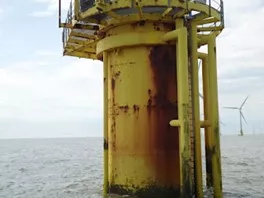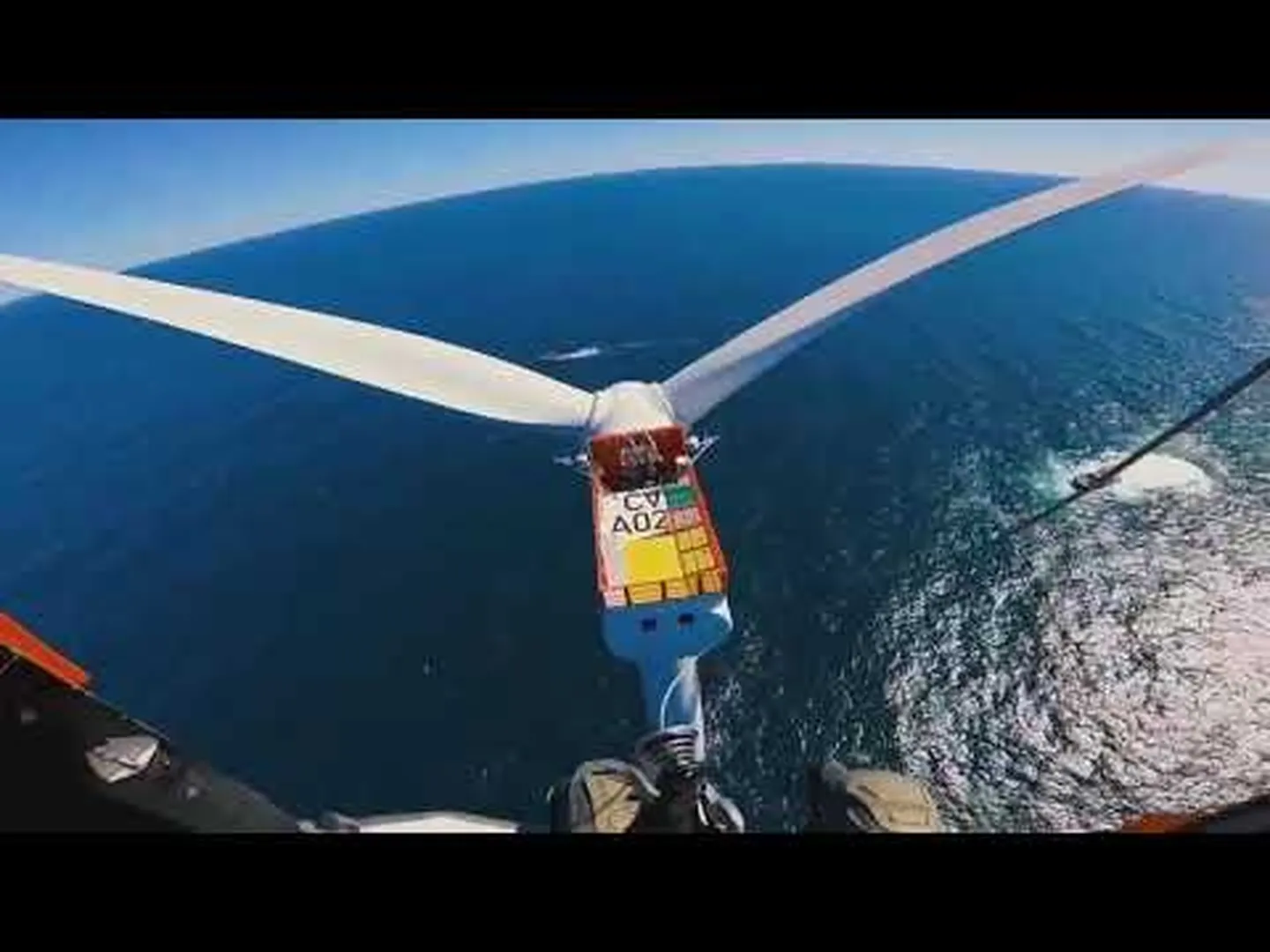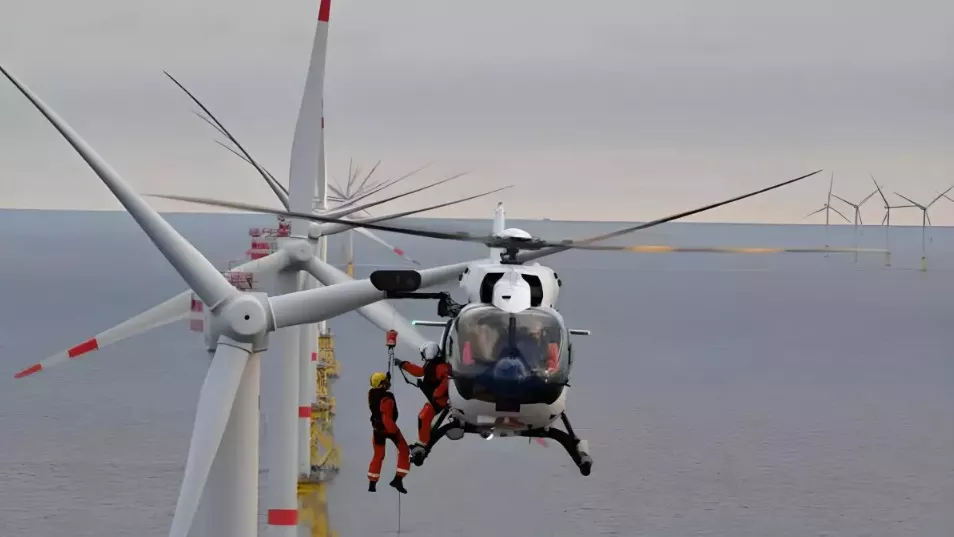Introduction
The global energy transition has sparked considerable interest in power generation through offshore wind farms; this drive towards renewable energy sources is significant in the fight against climate change. Offshore wind energy, with its impressive wind turbines, is an effective solution for generating clean electricity by harnessing the inexhaustible power of the wind. However, this new energy horizon requires comprehensive risk assessment of offshore wind energy to ensure a sustainable future.
Today, risk assessment in offshore wind power generation is a comprehensive and necessary process to identify, assess and manage risks in all phases of the life cycle of an offshore wind farm to ensure the long-term viability and sustainability of these projects. The current energy landscape emphasizes the need to optimize the performance of these facilities and minimize negative impacts on the environment and society.
Offshore wind energy risk assessment
Risk analysis in offshore wind energy is essential for comprehensive project management. This is a dynamic process ranging from investment feasibility, to ecological impacts and risks to personnel and operations; this assessment focuses on detecting, anticipating and mitigating adverse factors at any stage of the project. The dynamic and complex nature of these projects makes a detailed and continuously updated risk assessment indispensable.
Integrating this analysis from the outset and maintaining it throughout the project life cycle facilitates decision making to effectively address challenges and adapt strategies. This risk management not only promotes the resilience and efficiency of offshore wind farms, but is also fundamental to moving towards a more sustainable energy future, demonstrating the importance of this sector in the global energy landscape.
Importance of integrated risk management in offshore wind energy
This management is a necessary and rigorous process for several reasons covering the entire life cycle of an offshore wind farm, from planning and design to operation and eventual decommissioning. These are the main points that highlight its importance:
- Minimization of operational and financial risks: Identifying and proactively managing risks from the early stages avoids unexpected costs and project delays. This includes physical risks, such as extreme weather conditions, and technical risks related to design and technology.
- Environmental protection and regulatory compliance: Risk management ensures that offshore wind energy projects comply with environmental regulations, minimizing the impact on marine and coastal ecosystems. This is essential for licensing and for community and stakeholder acceptance of the project.
- Personnel safety: By considering the risks associated with the construction and maintenance of these facilities, which are located in hostile and high-risk locations, effective safety measures can be implemented to protect workers and reduce the risk of accidents and injuries.
- Optimizing performance and efficiency: A detailed risk analysis reveals opportunities to improve operational efficiency and reliability of wind turbines, which in turn maximizes energy production and project revenues.
- Climate change resilience: By assessing how future climate changes could affect the operation and sustainability of offshore wind farms, projects can be designed to be more resilient, ensuring their long-term viability.
- Investor and financier confidence: Sound and transparent risk management increases confidence between investors and financial institutions, making it easier to obtain financing for these large investments.
The importance of comprehensive risk management in offshore wind lies in its ability to ensure that projects are not only technically feasible and economically profitable in the long term, but also safe, environmentally sustainable and resilient in the face of future challenges.
Types of risks in offshore wind energy
The main types of risks in this industry are presented below:
- Technical and technological risks: Operations in marine environments present multiple risks including wind turbine failures: bearings, blades, gearboxes, corrosion (Figure 1)1, adverse weather conditions, damage to submarine cables, among others. While there are various challenges during the engineering, fabrication and construction of these mega structures, these types of risks mostly occur during the transportation and installation of the components.

- Financial risks: The construction of offshore wind facilities requires significant upfront investment, which increases financial risk, especially if project delays or cost overruns are encountered; while economic viability is affected by fluctuating energy prices and changes in government policies that impact the profitability of offshore wind projects.
- Environmental risks: The construction of these structures may modify currents and sedimentary processes, affecting biodiversity, habitat and surrounding marine ecosystems. Likewise, the noise generated by the turbines disturbs marine life.
- Risks to personnel: Offshore operations involve inherent dangers to the safety of workers, affecting the personnel involved during construction and maintenance, the most important of which are: work at heights and confined spaces with physical, mechanical, electrical, ergonomic, and psychosocial risks, each of which requires specific control and prevention measures.
The following video focuses on the importance of offshore wind turbine maintenance, a fundamental aspect to ensure the constant and efficient generation of renewable energy from these large offshore structures. Video courtesy of the company “CC, Composites Central“.

Among the personal risks, the use of aerial methods to access wind turbines presents some particular personal risks (Figure 2), as well as requiring additional training, such as: Helicopter Underwater Escape Training (HUET) and Basic Offshore Safety Induction and Emergency Training (BOSIET).2 .

- Operational risks: Adverse weather conditions and the remoteness of the facilities make access difficult during construction, regular maintenance and repairs, increasing operational costs and downtime, as well as the risk of interconnection with the terrestrial power grid, which causes power loss during transmission and the need for additional infrastructure.
- Social and political risks: Resistance from local communities and conflicts over the use of marine space may delay or prevent projects. Likewise, continuous regulatory changes, modifications in environmental and energy regulations are risks that alter the operating and financial conditions of offshore wind energy projects.
- Weather risks: Extreme weather conditions such as hurricanes, storms and storm surges cause significant damage to offshore wind installations, affecting their operability and safety.
Effective management of this series of risks in all phases of the project involves careful planning, with the implementation of technologies and engineering practices that minimize risks in all aspects. As energy production in the offshore sector expands globally, there will be new developments in areas with more unfavorable climatic conditions and the design of large turbines, factors that require the implementation of increasingly stringent risk analyses.
How to reduce the risks of offshore wind farms?
Reducing risks in offshore wind energy involves comprehensive management from the design phase through to operation and maintenance. The main strategies involve the use of advanced technologies and the innovative design of wind turbines and foundations that withstand the adverse conditions of the marine environment.
In addition, careful planning of park locations, considering factors such as marine biodiversity and shipping routes, minimizes environmental impact and reduces the risk of conflicts with other maritime activities. On the other hand, continuous training of personnel in safety practices and preventive maintenance of equipment are essential to ensure operational safety.
The use of real-time monitoring systems and predictive analytics allows early detection of potential failures, reducing downtime and costs associated with repairs. Collaboration between regulatory bodies and the scientific community develops comprehensive regulatory frameworks that support safe and sustainable practices. These collective measures minimize and control the risks presented by offshore wind energy generation that could lead to an economic or operational failure of the project.
In addition to all these measures, lessons learned should also be taken into account, positive steps should be taken to collect operational data on significant failures to improve understanding of risks, and it should be kept in mind that the application of appropriate processes, tools and techniques alone will not reduce risk; tangible risk reduction measures need to be implemented.
Offshore wind energy in today’s energy landscape
Recently, there has been a notable increase in state-of-the-art offshore wind energy projects. These huge farms, often located far offshore, are changing the energy industry by harnessing and converting wind into renewable energy. The offshore wind industry has experienced exponential growth over the last decade and is expected to continue to expand. The global offshore wind market is expected to grow at a compound annual growth rate of 12.3% from 2021 to 2026, increasing in value from $31.8 billion to $56.8 billion3.
“The Global Wind Energy Council (GWEC) expects 380 GW of offshore wind capacity to be added in 32 markets over the next 10 years (2023-2032). Nearly half of that growth is expected to come from the Asia Pacific region, followed by Europe (41%), North America (9%) and Latin America (1%).”4.
Conclusions
Successful implementation of offshore wind, a critical component in today’s energy landscape, demands a comprehensive offshore wind risk assessment that addresses all phases of project development. This management should focus on identifying and mitigating technical, financial, environmental and operational risks, paying special attention to personnel safety and reducing environmental impact.
The adoption of advanced technologies and sustainable practices, as well as close collaboration between regulators and the scientific community, are essential to meet these challenges. Therefore, effective risk management not only ensures the viability and profitability of offshore wind farms, but also constitutes a significant step towards advancing a more sustainable energy future, reflecting their importance in today’s energy landscape.
References
- Renewable Energy; “Corrosion and biofouling in offshore wind” ; https://energiasrenovablesmarinas.blogspot.com/2019/04/corrosion-y-biofouling-en-la-eolica.html; published April 27, 2019.
- López J; “Prevención y seguridad en transferencia de personal en aerogenerador offshore” Formación PRL prevención”; https://prevencioneolico.tesicnor.com/articulo-prevencion-seguridad-transferencia-personal-aerogenerador-offshore-3/.
- https://forum.all-energy.co.uk/2024/01/12/three-offshore-wind-farms-transforming-the-energy-landscape/
- https://commercial.allianz.com/news-and-insights/reports/offshore-wind-opportunities-risks.html#:~:text=From%20the%20loss%20of%20entire,of%20turbines%20out%20of%20commission.


